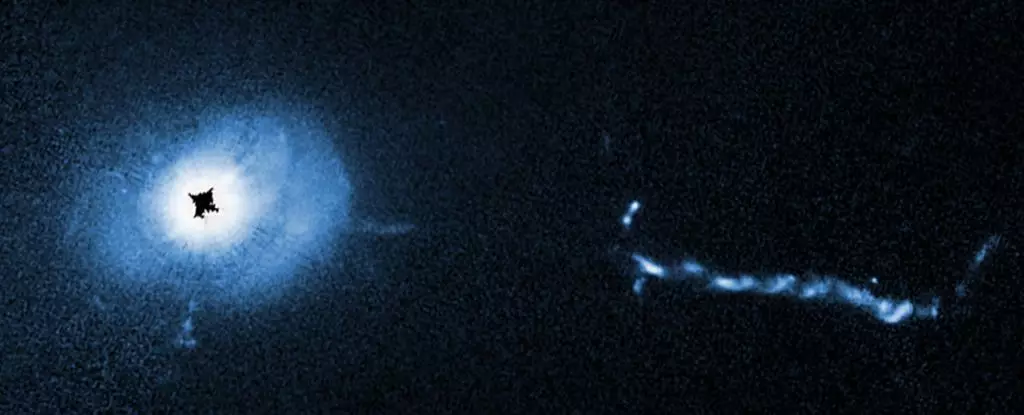The cosmos is replete with enigmatic entities, but few are as captivating as quasars. Quasars are not merely cosmic phenomena; they represent some of the most luminous objects in the universe, often outshining entire galaxies by a significant margin. Defined as highly energetic and distant active galactic nuclei, quasars are thought to be fueled by supermassive black holes situated at the centers of galaxies. While black holes themselves emit no detectable light, the interaction between these enormous gravitational forces and surrounding gas and dust creates an extraordinary spectacle of light — a hallmark of quasars. They leave scientists and astronomers alike yearning for a deeper understanding of their complex nature.
Among the myriad of quasars scattered throughout the universe, 3C 273 stands out. Located an astounding 2.5 billion light-years from Earth, it is one of the brightest and relatively closest quasars we can observe. The sheer intensity of light emitted from 3C 273 is equivalent to that of trillions of suns compressed into a minuscule region of its galactic core. This incredible brightness provides a unique opportunity for astronomers to investigate quasars more thoroughly. The recent observations made by the Hubble Space Telescope delivered unprecedented details about 3C 273, reinforcing its status as a pivotal object in the study of quasars.
Utilizing the Space Telescope Imaging System (STIS), astronomers have performed in-depth observations of 3C 273. The observations acted as a clever observational stratagem, functioning like a coronagraph that reduced the overwhelming glare of the quasar’s intense light. This approach allowed researchers to delve deeper into the features of 3C 273 without the interference of overwhelming brightness.
The results were astonishing. The new observations revealed intricate details and structures within a 16,000-light-year radius of 3C 273’s core. These unprecedented findings included potential satellite galaxies and other materials possibly in the process of being absorbed by the luminous quasar. Moreover, researchers identified the presence of a newly observed core jet, along with a perplexing L-shaped filament whose origin remains a mystery. This rich tapestry of detail enriches our understanding of how quasars interact with their host galaxies and their surroundings.
One of the most intriguing aspects of quasars like 3C 273 is their capability to generate jets. These jets, propelled by the black hole’s magnetic fields, can extend for hundreds of thousands of light-years into intergalactic space. In the case of 3C 273, astronomers documented the jet’s motion over a 22-year period, revealing that it moves at increasing speeds the farther it travels from the black hole. This discovery has profound implications for our understanding of jet dynamics and the processes that govern quasar activities.
The intricate relationship between the black holes and the matter surrounding them illuminates the fundamental mechanics of these celestial giants. Understanding the behavior of jets may unlock a treasure trove of insights into how quasars engage with their environment, potentially influencing star formation and galaxy evolution on a grand scale.
The findings surrounding 3C 273 mark a significant leap forward in our knowledge of quasars. According to astronomer Bin Ren of the Côte d’Azur Observatory, these observations bridge a considerable gap in our understanding, linking the localized radio interferometry techniques with broader optical imaging studies. This integrated approach allows for a more nuanced perspective on quasar morphology and the various phenomena occurring within their host galaxies.
While we still have much to learn about the details of the newly observed structures and the dynamics of 3C 273, these breakthroughs open doors to further exploration and research. The revelations reflect a pivotal shift in how scientists approach the study of quasars, marrying advanced observational techniques with intricate theoretical models that encapsulate the more extensive universe.
The exploration of 3C 273 signifies not just a solitary achievement but a holistic advancement in our understanding of the universe. With the Hubble Space Telescope shining a light on previously hidden structures, the scientific community is better equipped to unravel the many mysteries surrounding quasars. As technology and methods continue to evolve, the once nebulous realm of quasars will likely become more tangible, revealing their secrets and role in the cosmic tapestry. As we continue our quest for knowledge, quasars like 3C 273 serve as beacons, guiding us through the intricacies of the universe’s past, present, and future.


Leave a Reply